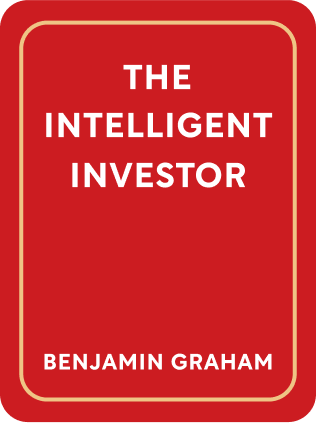

This article is an excerpt from the Shortform book guide to "The Intelligent Investor" by Benjamin Graham. Shortform has the world's best summaries and analyses of books you should be reading.
Like this article? Sign up for a free trial here .
Do you want to know how to value growth stocks? What strategies can you use for valuing stocks?
Learning how to value growth stocks can help you choose the right stocks to invest in. Benjamin Graham offers a formula for valuing stocks in The Intelligent Investor.
Keep reading to find out how to value growth stocks.
Formulas for How to Value Growth Stocks
Growth stocks are growing rapidly, and using their historical performance may underestimate the company’s value in the future. Can you learn how to value growth stocks?
Graham thus proposes the following formula for growth stocks:
Company Value = Current Earnings x (8.5 + 2x expected annual growth rate over next 10 years)
(Shortform note: This simple formula became popular and is now known as the Benjamin Graham formula.)
This formula represents the company’s total market capitalization in dollars. The current earnings is factual and found through the company’s financial statements. The expected annual growth rate is a prediction about the future and thus subjective. (Graham doesn’t give specific guidance on figuring out a company’s growth rate, other than considering the general factors in the last section.)
The formula for how to value growth stocks can also be rearranged to figure out the company’s proper value to earnings ratio (also known as price to earnings ratio, or P/E):
Value / Earnings = 8.5 + 2x expected annual growth rate
For example:
- A company with an expected annual growth rate of 20% could justify a P/E ratio of 48.5 (8.5 + 2*20).
- A company with an expected annual growth rate of 10% could justify a P/E ratio of 28.5.
- A company with an expected annual growth rate of 0% could justify a P/E ratio of 8.5.
The formula for how to value growth stocks can be reordered to figure out what the market believes the company’s growth rate will be, based on its current stock price:
Expected annual growth rate = (P/E ratio – 8.5) / 2
For example, if the market prices a company’s stock at a P/E ratio of 20, it believes the company will grow earnings by 5.75% every year.
These formulas help you determine whether a company’s stock is over- or undervalued as you strategize on how to identify growth stocks.
- If, through your analysis, you find that a company’s fair value is $500 million, but its current market capitalization is lower at $400 million, the stock may be a bargain.
- Likewise, if you believe a company’s value is $500 million but its market value is $1 billion, the stock may be highly overpriced and need to achieve incredible growth to earn its valuation.
(Shortform note: Graham doesn’t discuss situations where the company’s earnings are currently negative, as is the case with many public companies today. They likely wouldn’t meet his criterion for safety and would see investing in these companies as too speculative for most investors.)
Accounting Shenanigans
While we’ve treated earnings to be a fairly dependable number, in practice companies may use accounting sleight of hand to make their financials look more promising.
For instance, a company might present a business expense such as taxes on stock options as an “extraordinary nonrecurring event,” saying that it’s not part of normal business. It then shows “pro forma” earnings that ignore this expense.
Using techniques like this usually isn’t outright illegal; rather, it takes accounting tools that have reasonable intended purposes and stretches them to the edge of plausibility when learning how to value growth stocks.
Graham and Zweig highlight some common tricks to be aware of as you learn how to identify growth stocks:
- Timing of losses: When a company’s project fails, it typically reports a loss on it in the year that it actually takes the loss (such as when it closes down a factory). However, some companies may report a loss early under the guise of “anticipating future losses,” reporting the loss well before it actually happens.
- Why would a company do this? To take advantage of investor expectations—if the stock market has had a bad year and investors have already resigned their expectations for the company, it’s a good time to declare possible future losses. In essence, this shifts the loss from future years to the current year, thus making future years’ earnings higher.
- “Special”, “extraordinary” or “one-time” items: These are one-time charges or revenues that the company believes is not indicative of normal operations and won’t recur in future years. Examples of legitimate extraordinary items include a regulatory fine or eliminating debt. However, some companies may improperly report regular business expenses as “one-time charges,” which makes company earnings look better than they really are. A regular pattern of “one-time” items appearing more than one time is a red flag.
- Choice of depreciation: How a company chooses to depreciate assets will affect its earnings. In particular, if a company changes its choice of depreciation from one year to another, it can cause a short-term change in earnings that doesn’t represent any material differences in the business.
- Pro forma financials: While GAAP accounting (Generally Accepted Accounting Principles) is the standard for financial reporting, companies may report alternative “pro forma” financials, which pretend as though certain items are not part of normal operations. One legitimate use of pro forma financials is during a business acquisition, to show the acquirer how the business would operate when acquired. However, during the dotcom bubble, many companies improperly used pro forma financials to inflate their earnings.
- Aggressive revenue recognition: Say a company sells a product that the customer pays for over the course of months or years. Realistically, the cash goes from the customer over this long period of time. However, the company may “recognize” the revenue over years as having been collected instantaneously at the moment of the sale. This inflates revenues and can overestimate the solidity of the business, particularly if the customer later stops paying.
- Treating normal expenses as capital expenditures: A company may report normal operating expenses as capital expenditures. This allows the company to boost assets on its balance sheet and take less of a hit on its net income.
- Over-optimistic pension projections: A company with a pension will estimate how much money it needs to pay future pensions. When a company earns more than this estimated amount, it can report the difference as net income. However, a company can also artificially change this number by changing its estimations.
- For instance, a company might previously estimate its pension plan would grow at 6% per year. If it suddenly improved the estimate to 8% per year, it would need less money today to meet future obligations. This presents an artificial “gain” that can be reported as net income.
- Pay attention if the “net pension benefit” is a big portion of the company’s net income—say, over 5%.
The details of corporate accounting can be abstruse and difficult to unpack. One reliable way around these shenanigans is to use a long period of earnings, say 10 years, with all the adjustments added in. Don’t rely solely on a single year’s earnings for your investment decisions.
When studying a company’s financials, beware of any reported changes in the company’s accounting methods. These are opportunities for companies to inflate performance over previous years when you have to learn how to identify growth stocks.
(Shortform note: Accounting regulation is an ever-changing field. In reaction to major accounting frauds such as Enron and Worldcom as well as the dotcom crash, the Sarbanes-Oxley Act of 2002 was passed in the United States to standardize financial reporting and decrease flexibility of some of the tools mentioned here. However, as Graham notes, companies will always find creative ways to toe the line of regulation.)

———End of Preview———
Like what you just read? Read the rest of the world's best book summary and analysis of Benjamin Graham's "The Intelligent Investor" at Shortform .
Here's what you'll find in our full The Intelligent Investor summary :
- Key advice from what Warren Buffett considers the "best book about investing"
- The 2 major indicators you should use for evaluating stocks
- How you can use aggressive or defensive investing strategies






